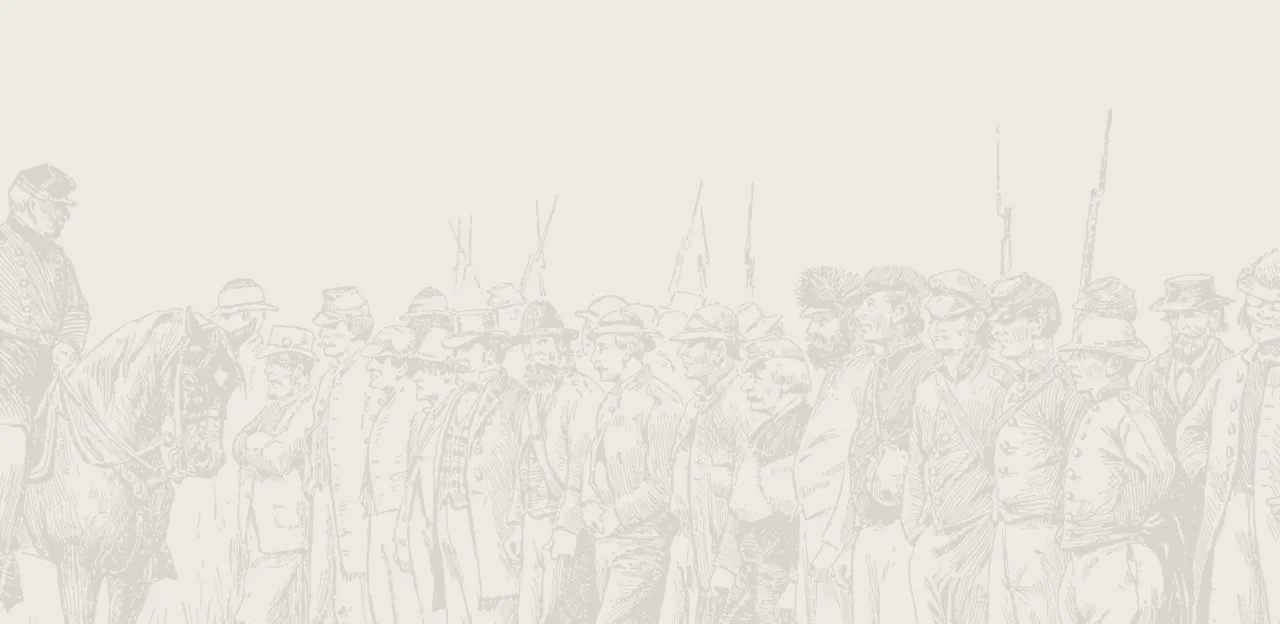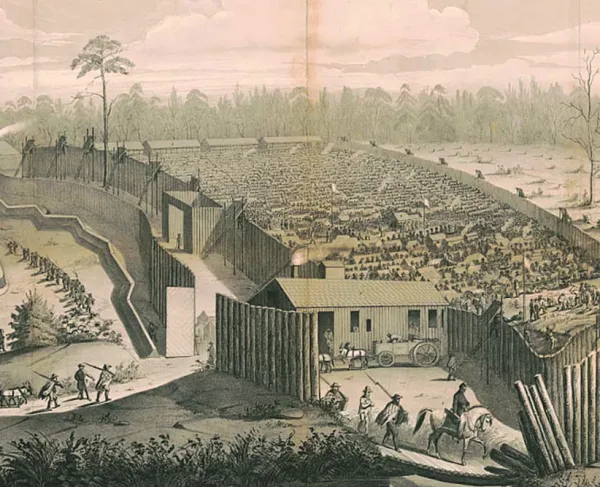Champion Hill

The Battle of Champion Hill
Champion's Hill, Bakers Creek
As the first streaks of dawn appeared in the eastern sky on May 16, 1863, a train heading east neared Clinton, Mississippi, and found the tracks ahead destroyed. The brakeman and the baggage-master were escorted by Union soldiers into the presence of Maj. Gen. Ulysses S. Grant. When questioned, they informed the Union commander that the Confederate army defending Vicksburg, which they estimated numbered 25,000 men with ten batteries, was in Edwards Station and preparing to attack the rear of Grant’s army. This was not a bad estimate of the Confederate army, which consisted of 23,000 men and 15 batteries. Grant ordered his troops, 32,000 in all, to march on Edwards along three parallel roads.
Although the opening shots of the Battle of Champion Hill were fired along the lower road around 7:00 a.m., it was not until 9:45 that the Union vanguard of Brig. Gen. Alvin Hovey’s division turned a bend in the upper road and reached the country home of Sid and Matilda Champion. A half-mile southwest of the house was the bald crest of Champion Hill, which dominated a strategic crossroads that would be vital to the final assault on Vicksburg.
Hovey quickly swung his men into line of battle, supported by the men of Maj. Gen. John A. Logan’s division. Grant arrived on the field shortly after 10 a.m. and ordered this powerful battle line to advance. With a mighty cheer, the Federals slammed into the Confederates at the base of the hill and a wild hand-to-hand brawl ensued.
Union soldiers swept over the crest of Champion Hill and drove hard toward the crossroads only 600 yards farther south. Despite a murderous fire of musketry and artillery, Hovey’s division seized the crossroads and the Union army was on the verge of victory.
Confederate Gen. John Pemberton ordered a desperate counterattack by Brig. Gen. John S. Bowen’s Division. Around 2 p.m., Bowen’s Missourians and Arkansans slammed into Hovey’s men before they consolidated their hold on the crossroads. Bowen’s soldiers surged over the crest of Champion Hill and pushed the Federals back to the Champion House. Their success, however, was short-lived, as two more Union divisions charged the hill. Threatened in flank and rear, Bowen was compelled to fall back. When the Federals again seized the crossroads, Pemberton ordered his army off of the field and back toward the defenses of Vicksburg. Union victory was at hand.
Brig. Gen. Lloyd Tilghman’s brigade was left behind to cover the Confederate retreat. The Federals advanced in force against Tilghman, and he was mortally wounded, struck in the body by a Federal artillery shell while directing the fire of Capt. James Cowen’s Mississippi battery covering the bridge over Baker’s Creek. Tilghman’s brigade was forced from the field, but his sacrifice enabled most of Pemberton’s army to safely withdraw towards Vicksburg, with the exception of Maj. Gen. William W. Loring’s Division, which was cut off. Loring’s men managed to escape and join Joe Johnston’s forces elsewhere.
Casualties for both sides totaled around 6,300, making the battle of Champion Hill the bloodiest of the Vicksburg Campaign. The Union victory at Champion Hill, and the next day at the Big Black River Bridge, forced the Confederates into a doomed position inside the fortifications of Vicksburg.





